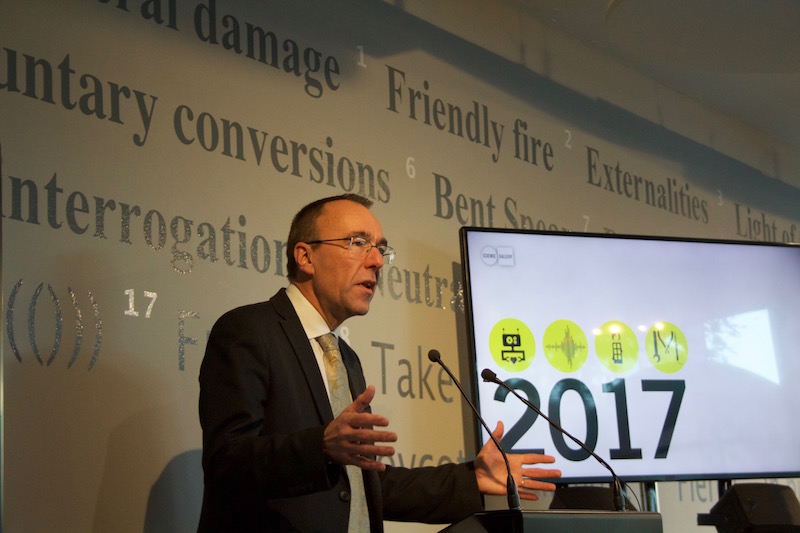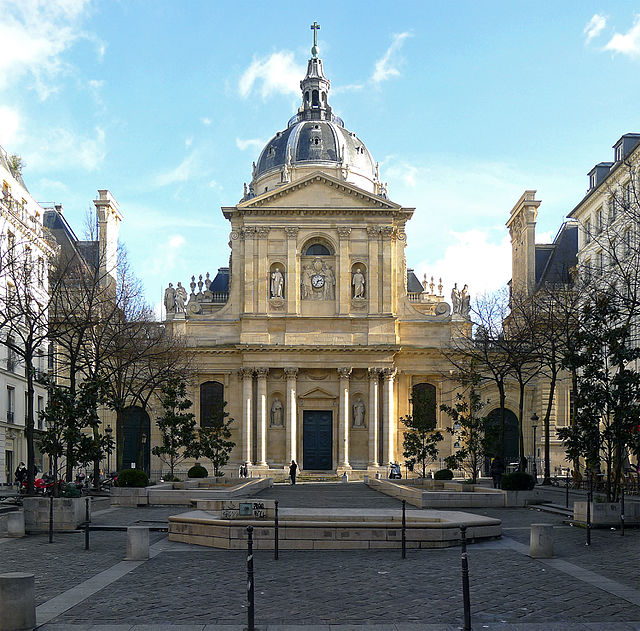
The Science Gallery at Trinity will host exhibitions in 2017 that will investigate impossible music instruments, whether artificial intelligence can do your job better and question if the end of the world would be entertaining.
Vice-Provost and Chief Academic Officer, Prof Chris Morash, along with former Trinity College Dublin Students’ Union (TCDSU) President Senator Lynn Ruane, spoke at the launch this morning.
The programme for 2017 will include a number of exhibitions, including “Humans Need Not Apply”, which will explore the idea that the human workforce could be replaced by artificially intelligent machines, while “Make Noise” will offer an opportunity to visitors to create noise with alternative music instruments, seeking to to discover when noise becomes music.
Morash talked about what the gallery for does for us, saying it “returns the miraculous to us in the age of the casual miracle” and how that is a “vital social function”.
Welcoming the programme, Morash spoke about how his colleagues in the School of English are good at telling stories, but since taking up the job of Vice-Provost he has realised that his colleagues in science are also great at telling stories.
Talking about how the Science Gallery is a museum that resonates with people, Morash described that walking around the gallery we see thing that are “often intrinsically not that amazing as objects, and then you start to realise what they’re telling us, what the story is, you start to realise their resonance, and you realise that they are astonishing”.
One exhibition, “Collapse”, will be partly funded by Science Foundation Ireland (SFI), and will look into apocalyptic scenarios, and how the catastrophic can be entertaining and the likelihood of some of the possibilities.
Speaking to The University Times, Morash said that the importance of having the gallery as part of Trinity is its outreach: “The stories you get of people who may not have thought of coming into Trinity, may not have thought of it is a space they can inhabit, and they are coming in here and they are seeing things that are exciting them.”
Morash also said that the international aspect is important: “This is something produced in Trinity that is now in Venice, London, Bangalore, that is really exciting.”
Ruane talked of her regret of not coming into the gallery sooner than during her term as TCDSU President, because the gallery “went so much beyond science in how you would think it”.
During her time as TCDSU President, Ruane, with the union, collaborated with the Science Gallery to bring 400 children from disadvantaged schools to take part in the educational programmes that the gallery offers.
Ruane also spoke about how the gallery’s outreach educational programme Makeshop went out to Tallaght during College Awareness Week, joking about how slowly, but surely, she will merge Trinity and Tallaght eventually: “It is great to see how far reaching Trinity and the Science Gallery is getting.”
Speaking at the launch, Director of the Science Gallery, Lynn Scarff said: “We live in very tricky and complicated times, with a lot of major issues and challenges ahead, and I really believe, that now more than ever, that we need more spaces like the Science Gallery.”
Scraff hoped that the type of space the gallery is offers a platform for dialogue, encouraging empathy and perspective, and “bring together people from different ideas, disciplines, backgrounds and beliefs”.
Also speaking at the launch was student, and one of the Science Gallery’s mediators, Hasshim Gopee. He spoke about how important engagement with the gallery before becoming a civil engineering student in Dublin Institute of Technology (DIT), led to his decision to pursue a career in science ”always exploring different things, finding out more about what the world is actually hiding”.
The Science Gallery hopes to extend their educational programme, Makeshop, which is based on Lincoln Place, to further reach out to young people beyond the city centre. Ruane praised this outreach, and Scarff spoke how it was important to the gallery that they extend this programme to the wider national and global communities.
Science Gallery was launched in 2008, and this year it welcomed over 400,000 visitors to their free-of-charge exhibitions.






